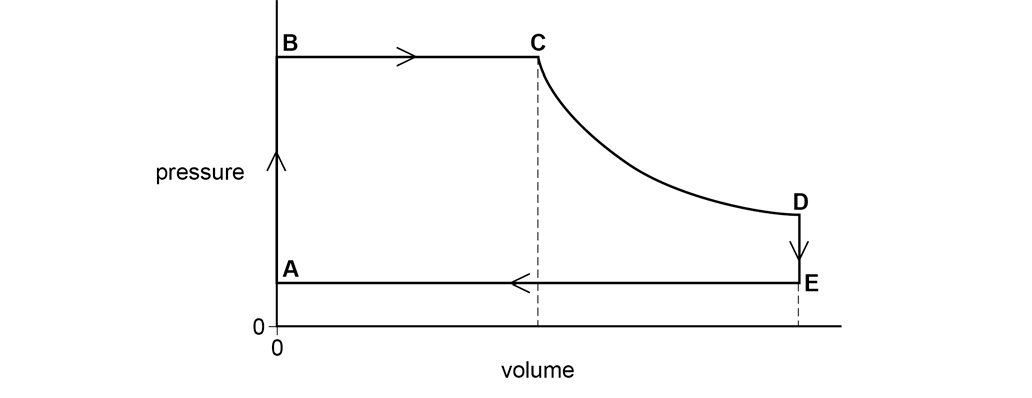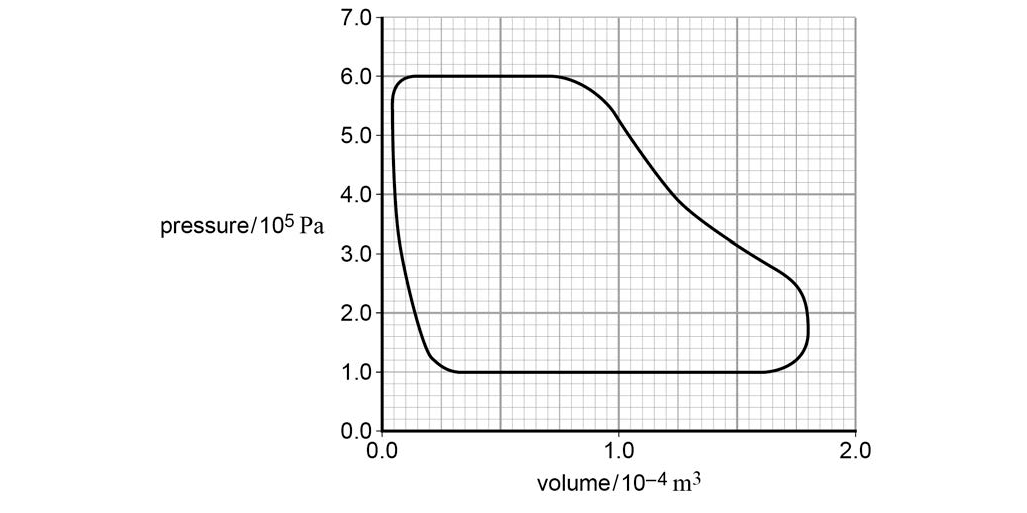A single-cylinder air motor running on compressed air has the theoretical indicator diagram shown in Figure 4.
Figure 4

From B to C the high-pressure air pushes a piston down a cylinder, doing work.
At C, a valve cuts off the supply of air and the air in the motor expands adiabatically to D, pushing the piston further down the cylinder.
At D an exhaust valve opens and from D to E to A the air is exhausted to the surrounding atmosphere as the piston moves up the cylinder.
At A the exhaust valve closes and the inlet valve opens connecting the cylinder to the supply of compressed air.
Use the first law of thermodynamics to explain why the temperature falls during the adiabatic change between C and D.
Figure 6 shows the actual indicator diagram for the air motor.
Figure 6

The motor was running at 20 cycles per second when the indicator diagram was recorded.
Determine the indicated power, in watts, of the motor.
Explain why the indicated power for the air motor is different from the output power.
Did this page help you?


